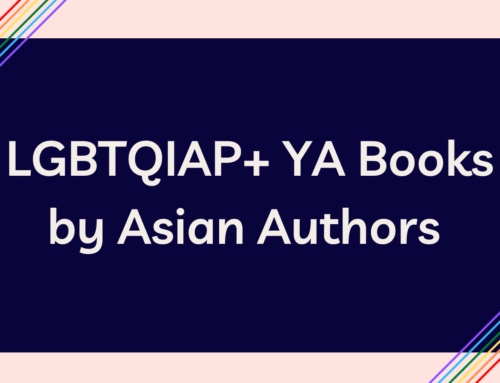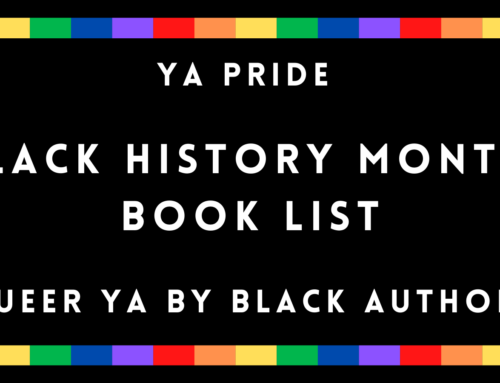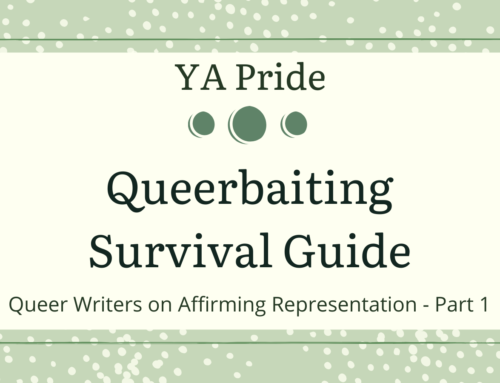We are HUGE fans of Robin Talley’s debut novel Lies We Tell Ourselves. Today, we are THRILLED to reveal the gorgeous new cover that this fantastic book will soon be getting! We also got to talk to Robin Talley and her kick ass editor T.S. Ferguson about the cover redesign, representation, and Robin’s forthcoming projects.
In 1959 Virginia, the lives of two girls on opposite sides of the battle for civil rights will be changed forever.
Sarah Dunbar is one of the first black students to attend the previously all-white Jefferson High School. An honors student at her old school, she is put into remedial classes, spit on and tormented daily.
Linda Hairston is the daughter of one of the town’s most vocal opponents of school integration. She has been taught all her life that the races should be kept “separate but equal.”
Forced to work together on a school project, Sarah and Linda must confront harsh truths about race, power and how they really feel about one another.
Boldly realistic and emotionally compelling, Lies We Tell Ourselves is a brave and stunning novel about finding truth amid the lies, and finding your voice even when others are determined to silence it.
Without further ado, here’s the new cover of Lies We Tell Ourselves!
IS IT NOT JUST GORGEOUS AND FANTASTIC AND EVERYTHING YOU COULD WANT IN A COVER FOR THIS BOOK. I will totally be buying another copy just for this cover!
Here’s what Robin & T.S. have to say about the cover, representation, and more!
Vee: We LOVE the new cover. Did you have any input in the new design? And what do you think of it?
Robin: Thank you! I think it’s really quite gorgeous. As for input, I actually didn’t know that there was going to be a new design for the paperback until there was already a draft in the works, so it was quite a surprise! It’s very different from the hardcover design, which I adored.
But what’s great about the paperback version is that you can really get a good look at both Sarah and Linda. I think both of the models do a great job of embodying the characters as I’d envisioned them. I also love how they’re both looking straight at you. I think it makes them both look very smart, very astute, which is fitting with how I see the characters.
Also, of interest to GayYA readers, there’s a small but significant tweak to the back cover copy from the hardcover version, too. This one was my editor T.S.’s idea. The hardcover back copy refers to Sarah and Linda having to deal with “how they really feel about one another.” The new copy changes that to “the fact that they may be falling for one another.”
To me, as a queer reader, the original copy was plain as day about the fact that this is a girl/girl story ― but apparently that wasn’t the case for all readers, because we heard from quite a few people who were surprised to realize Sarah and Linda weren’t straight. So T.S. made that tweak to the new copy so now there will be no mistaking it.
I’m really pleased about that, because I want to make sure this book is accessible to teens and other readers who may be specifically seeking out stories with QUILTBAG characters. There are still few enough of these stories out there that I think we need to make sure they’re easy to find.
V: What was most exciting to write in Lies We Tell Ourselves, and what did you find most challenging?
R: To tell you the most exciting part to write would actually be a spoiler, so I’ll just say that it’s the last line of chapter 26. (No skipping ahead if you haven’t read it yet!)
The most challenging part of writing this book was getting into Linda’s head. The way she thinks, especially at the beginning of the story, defies logic and understanding. I didn’t realize how big a job I was taking on when I first decided to have her narrate half the story. I doubt I’ll ever write from a point of view like hers again ― in addition to being incredibly difficult, it was also pretty devastating to try to spend time inside her mental space, but that’s what I had to do to make it through her chapters.
V: The Queer YA community has been interested in “happy f/f” recently. Without spoiling the book, did you make a conscious decision to let your characters end the book on an up note?
R: Not really. With some books, I know how they’ll end from the very beginning of the writing process, but Lies was not one of those. It took several months of working on the story before the ending began to take shape in my mind.
I was consciously thinking, though, that these characters, especially Sarah, had been through so much ― I couldn’t just leave them where they were. I wanted to put them on a path to a better future and a better world.
V: One of the main characters in Lies We Tell Ourselves is bisexual, but the book doesn’t use the word. You’ve spoken about your increasing awareness of bisexual erasure and the importance of calling bi characters bi — and done a great job of IDing Sarah as bi via social media. How has becoming more educated about the specific issues surrounding bisexual representation influenced your writing, and how do you think the community can get this information out to writers who are writing bisexual characters today?
R: I actually think both of the main characters in Lies would identify as bisexual if they were familiar with the concept as we know it today. In fact, they sort of come close ― at one point in the book Linda tries to get a copy of Alfred Kinsey’s book Sexual Behavior in the Human Female, which came out six years before Lies takes place. That book would’ve introduced them to the idea of bisexuality, but ultimately they aren’t able to get a copy, and they wind up reading depressing lesbian pulp fiction instead.
In the 1950s ― and, sadly, still today in many places ― there was a concerted effort in place to prevent children and teenagers from having access to honest sex education. Linda and Sarah aren’t familiar with the term bisexual or even with gay or lesbian. They might’ve heard homosexual or queer, but they would view those terms with revulsion and never want to apply them to themselves. (And they likely would’ve assumed those terms could only apply to men, anyway.)
So far, though, all of my other books are set in the present day, and I’m making a concerted effort in them to be as specific with labels as I can. My next book, What We Left Behind, is probably too label-heavy for its own good, since identity is a major theme of the plot. But for my next book after that ― As I Descended, a lesbian retelling of Macbeth coming out in 2016 ― the main character, Maria, has had relationships with both boys and girls, but in my drafts of the book I never had her actually specify a label for her sexual orientation. I assumed her relationship history would speak for itself.
As I’ve spent more time in the YA social media world, though, I’m starting to better appreciate how important it is for labels to be spelled out ― not just for sexual orientation, but for other aspects of identity. So I’m trying to make a more conscious effort to specify exactly how my characters see themselves. Not all of them will have labels that they’re comfortable using yet (as was the case for me in my teen years). But I’m revising As I Descended to have Maria explicitly describe herself as bi in the text.
When I was in high school in the 90s I never expected to read about a character who was in the same place as me in terms of identity. I can imagine, though, how amazing it would’ve been if I had encountered a story like that. And today’s teens actually have the opportunity to see themselves reflected on the pages of the books they choose to read. I want to contribute to that as much as I possibly can, and I hope other writers will feel the same way.
V: We are so excited for your upcoming book, What We Left Behind. What can you tell us about it?
R: I can tell you:
- That it’s coming out in October
- That the lead character identifies as genderqueer (and the co-lead identifies as gay)
- That it’s set during the first semester at college for the main characters, who are a pair of high-school sweethearts
- That almost every significant character is somewhere on the QUILTBAG spectrum
- And that it’s my favorite book I’ve ever written, with characters who are so close to my heart I sometimes forget they aren’t real. I can’t wait to let them loose into the world. I hope you guys love them too!
—
V: We just LOVE this cover for Lies We Tell Ourselves. What do you hope this new cover will communicate to readers about the book?
T.S.: I hope readers will see this cover and immediately understand that this is a historical novel about two girls, one black and one white (with all the implications that go along with that premise). But more importantly, I hope this cover is striking enough and beautiful enough for potential readers to pick it up, read what it’s about, and get pulled in from there.
V: One of the things we love about this redesigned cover is the prominence of a POC. (And the FACE! Are we past the era of weird hip shots and cut off heads? One can dream.) Was that a deliberate decision to push back against some of the troubling cover trends in YA?
T.S.: The decision to show a black girl on the cover was most definitely a deliberate decision to push back against these cover trends. I was lucky enough that my entire team backed me in this decision from the very beginning of our cover discussions for the hardcover. I said “I think it’s important to show a black girl on this cover, especially given the theme of the book. No silhouettes, no birds, and if we can only show one of the girls, it has to be Sarah.”
When we started discussions for this paperback redesign, that sentiment held true. While we wanted the cover to be a bit more commercial than the hardcover, and hopefully reach a wider audience, we never discussed taking Sarah off the cover. Having her there was a must!
V: One of the things we have heard about the lack of POC on covers is that there are few stock photos of POC, so putting images on the cover means a full photo shoot to get something suitable. Did you find this to be the case? And what was the process like of developing this (gorgeous, amazing) cover?
T.S.: I’ve definitely heard that it’s harder to find stock photos featuring models of color, but since I’m not a designer, I’m not sure how true that really is. The process for this cover seemed really simple. Our design team showed me four different concepts to start with, each with different black models featured, and this concept was the one we all fell in love with.
I’m really excited about this direction because, while I usually let the designers do their own thing and then give my feedback, I had given them one very specific direction (in case they needed inspiration), and this was it. My vision was to show the girls side by side against a 1950s/1960s wallpaper, and have the image saturated as if it was an old black & white photo that had been colorized. They really delivered on that vision in such a beautiful way and I’m so pleased with it. I hope readers love it as much as I do.








I can’t believe I haven’t come across the acronym QUILTBAG before! I love the new cover WITH faces! Great interview and I have placed two more holds at the library!